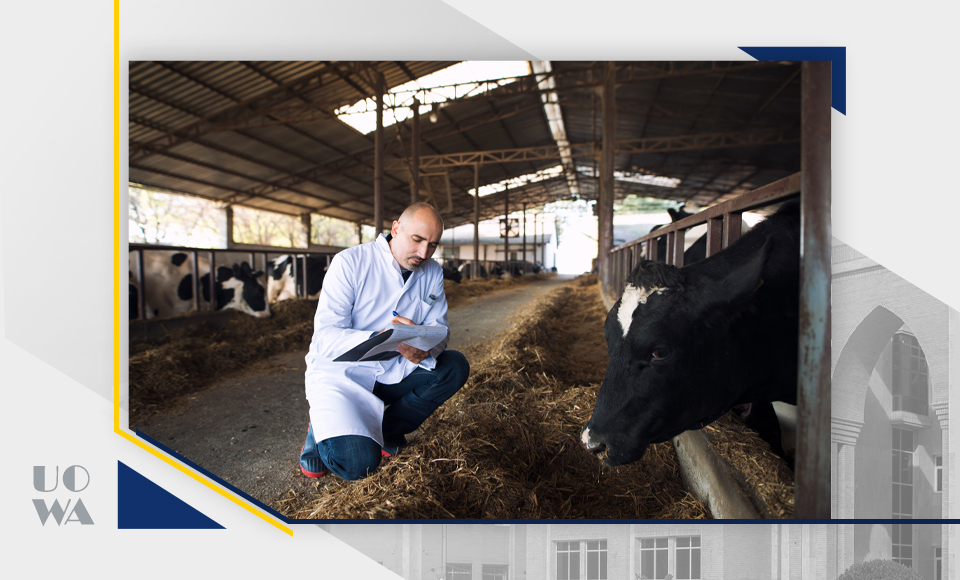Definition:
Foot-and-Mouth Disease Virus (FMDV) is a highly contagious viral disease that affects cloven-hoofed animals such as cattle, buffalo, sheep, goats, and pigs. It is caused by a virus belonging to the Picornaviridae family, genus Aphthovirus. It is characterized by the appearance of vesicular lesions on the mouth, tongue, udder, and hooves, leading to loss of appetite, decreased milk production, and lameness.
Infection
Foot-and-mouth disease is an endemic disease in Iraq since the 1930s and is active once every four to five years in cases where one of the conditions for its reactivation is met, including low temperatures.. Foot-and-mouth disease virus (FMDV) is characterized by its sensitivity to high temperatures, as it cannot tolerate temperatures above 50 degrees Celsius, while it remains active at low temperatures. Therefore, cold weather and low temperatures do not cause the disease, but rather contribute to the virus remaining active for longer periods in the environment, which increases the possibility of its transmission and spread among animals.
Disease transmission:
The virus is transmitted through direct contact with infected animals or inhalation, and can also be transmitted through clothing, shoes, feed, and contaminated water. It is characterized by its rapid spread in the herd, making it one of the most dangerous economically infectious animal diseases.
Is it transmitted to humans?
Foot-and-mouth disease rarely affects humans, as it is considered a very rare zoonotic condition.
Is consuming infected meat dangerous?
Consuming meat or milk from infected animals does not pose a risk to humans when well cooked or pasteurized, as the virus does not remain active at high temperatures. However, consuming uncooked products is prohibited to prevent microbiological spread.
Precautionary and control methods:
1. Regular vaccination (Vaccination Programs): The most important means of prevention, and the (FMD Vaccine) is given to animals in periodic doses.
2. Quarantine: Isolating infected animals immediately upon detection to prevent spread.
3. Disinfection: Using materials such as formaldehyde and sodium hypochlorite to disinfect farms and equipment.
4. Movement Restriction: Limiting the movement of animals between infected and healthy areas.
5. Culling: In some severe cases, infected animals are culled to prevent widespread outbreaks.
Conclusion:
Foot-and-mouth disease is an economically dangerous viral disease but does not pose a direct threat to human health when cooked animal products are consumed. Prevention depends on vaccination, isolation, and continuous disinfection, which help limit its spread and protect livestock.






